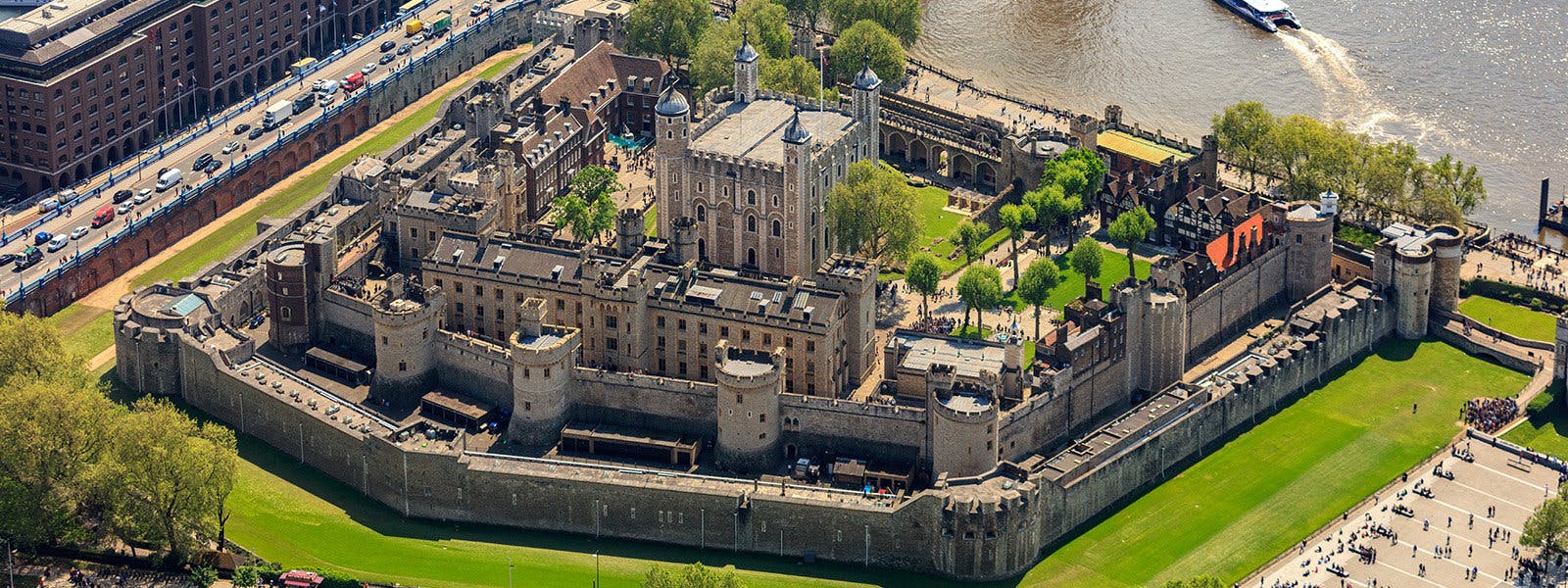
The Tower of London is a UNESCO World Heritage Site.
HM Royal Palace and Fortress of the Tower of London (the Tower) is one of England’s most evocative ancient monuments. There is a tangible sense of history in every tower and around every corner, making it an endlessly fascinating place for visitors from all round the world.
The buildings and layout that we see today stand as the culmination of a sequence which started around 1067, and have developed dynamically ever since in line with the changing needs of the site’s occupants, users and visitors.
A World Heritage Site
The Tower was inscribed onto the World Heritage List in 1988 under two of the required criteria for inscription.
The justification was:
Criterion (ii):
A monument symbolic of royal power since the time of William the Conqueror, the Tower of London served as an outstanding model throughout the kingdom from the end of the 11th century. Like it, many keeps were built in stone, e.g. Colchester, Rochester, Hedingham, Norwich or Carisbrooke Castle on the Isle of Wight.
Criterion (iv):
The White Tower is the example par excellence of the royal Norman castle in the late 11th century. The ensemble of the Tower of London is a major reference for the history of medieval military architecture.
Visit the UNESCO website for details on the Tower as a World Heritage Site (WHS).
UNESCO website - Tower of London World Heritage SiteWorld Heritage Site Management Plan
All World Heritage Sites are required by UNESCO to have a Management Plan.
The purpose of the Management Plan is to ensure the effectual management of the WHS for present and future generations and to provide an agreed framework for long-term decision-making on the conservation and improvement of the Tower.
Historic Royal Palaces has recently been through a process of revising and updating the WHS Management Plan for the next five years, in line with UNESCO’s requirements. The Plan, adopted in 2016, sets out the management objectives for the Tower, supported by actions, which reflect the opportunities, challenges and issues faced.
The Plan has been written in consultation with the Tower of London WHS Consultative Committee, a group including on-site partners, the relevant local authorities and heritage specialists. The Committee provides a forum for consulting on issues affecting the Tower and its environs.
Local planning authorities in the UK are expected to take relevant policies in WHS management plans into account in developing their strategy for the historic environment and in determining relevant planning applications.
World Heritage Site Management Plan
Tower of London Local Setting Study 2010
For further information or queries relating to the World Heritage Site, please contact the World Heritage Site Coordinator: whscoordinator@hrp.org.uk
World Heritage Sites in the UK
The Tower of London is one of a number of sites in the UK on the World Heritage List. Download a map of the UK sites below or find out more on the World Heritage UK website:
Map of UK World Heritage Sites 2025 (Opens a PDF, 5.5MB) Snapshot of each site - World Heritage UK website